ELA-01.C  ELA-01.C ELA-01.C Strand 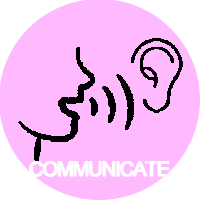 | (C) Communications
Learners will organize and express ideas in a format appropriate for the audience and purpose, focusing on skills involved with collaboration, active listening, and oral presentation of information.
|
Clusters- (PC) Presentational Communication
Learners will organize and express information in a format appropriate to the audience and purpose. - (C) Collaboration
Learners will engage in a range of discussions with various partners on relevant topics, texts, and issues.
Calculation Method for StrandsStrands are larger groups of related standards. The Strand Grade is a calculation of all the related standards. Click on the standard name below each Strands to access the learning targets and rubrics/ proficiency scales
for individual standards within the domain. |
|
ELA-01.C.01

|
1st Grade (ELA) Targeted Standard
(C) Communications
(PC) Presentational Communication
Learners will organize and express information in a format appropriate to the audience and purpose.
|
ELA-01.C.01 Describe people, places, things, and events with relevant details expressing ideas orally to a targeted audience.
 Proficiency Scale Proficiency Scale
Progressions
Standard C.01: Presentations
- ELA-00.C.01 Describe personal interests or tell stories orally to a targeted audience.
- ELA-01.C.01 Describe people, places, things, and events with relevant details expressing ideas orally to a targeted audience.
- ELA-02.C.01 Report on a topic or text, tell a story or recount an experience to a targeted audience with relevant facts and descriptive details.
- ELA-03.C.01 Report relevant facts and descriptive details of a topic, text, story, or experience for a targeted audience.
- ELA-04.C.01 Organize and present information as an individual and group for a formal and informal audience.
- ELA-05.C.01 Organize and present information as an individual and group for a formal and informal audience.
- ELA-06.C.01 Construct and deliver formal and informal presentations considering the provided audience and purpose, including multimedia components when appropriate.
- ELA-07.C.01 Construct and deliver formal and informal presentations considering the audience and purpose using multimedia components when appropriate.
- ELA-08.C.01 Construct and deliver formal and informal presentations considering the audience and purpose, including multimedia components when appropriate.
- ELA-09.C.01 Construct and deliver formal and informal presentations, incorporating multimedia components when appropriate for the audience and purpose.
- ELA-10.C.01 Construct and deliver formal and informal presentations, incorporating multimedia components when appropriate for the audience and purpose.
- ELA-11.C.01 Construct and deliver formal and informal presentations, incorporating multimedia components when appropriate for the audience and purpose.
- ELA-12.C.01 Construct and deliver formal and informal presentations, incorporating multimedia components when appropriate for the audience and purpose.
|
|
ELA-01.C.02

|
1st Grade (ELA) Targeted Standard
(C) Communications
(PC) Presentational Communication
Learners will organize and express information in a format appropriate to the audience and purpose.
|
ELA-01.C.02 Speak audibly in complete sentences to express thoughts, feelings, and ideas.
 Proficiency Scale Proficiency Scale
Progressions
Standard C.02: Giving Oral Presentations
- ELA-00.C.02 Speak audibly to express thoughts, feelings, and ideas.
- ELA-01.C.02 Speak audibly in complete sentences to express thoughts, feelings, and ideas.
- ELA-02.C.02 Speak audibly in complete sentences when proper to the task and situation to provide requested details or clarifications.
- ELA-03.C.02 Speak in complete sentences using proper eye contact and volume to express thoughts, feelings, and ideas.
- ELA-04.C.02 Present ideas using proper eye contact, body language, and volume in formal and informal situations.
- ELA-05.C.02 Present ideas using proper eye contact, body language, and volume in formal and informal situations.
- ELA-06.C.02 Present ideas using proper eye contact, body language, volume, and pronunciation in formal and informal presentations.
- ELA-07.C.02 Present ideas using proper eye contact, body language, volume, and pronunciation in formal and informal presentations.
- ELA-08.C.02 Present ideas using proper eye contact, body language, volume, and pronunciation in formal and informal presentations.
- ELA-09.C.02 Implement proper verbal and nonverbal communication for tasks and situations.
- ELA-10.C.02 Implement proper verbal and nonverbal communication for tasks and situations.
- ELA-11.C.02 Implement proper verbal and nonverbal communication for the task and situation.
- ELA-12.C.02 Implement proper verbal and nonverbal communication for the task and situation.
|
|
ELA-01.C.03

|
1st Grade (ELA) Targeted Standard
(C) Communications
(PC) Presentational Communication
Learners will organize and express information in a format appropriate to the audience and purpose.
|
ELA-01.C.03 Use words and phrases acquired through conversations, reading, being read to, and responding to texts, including frequently occurring conjunctions to signal simple relationships.
 Proficiency Scale Proficiency Scale
Progressions
Standard C.03: Use of Receptive Vocabulary
- ELA-00.C.03 Use words and phrases acquired through conversations, reading, being read to, and responding to texts.
- ELA-01.C.03 Use words and phrases acquired through conversations, reading, being read to, and responding to texts, including frequently occurring conjunctions to signal simple relationships.
- ELA-02.C.03 Use words and phrases acquired through conversations, reading, being read to, and responding to texts, including using adjectives and adverbs to describe.
|
|
ELA-01.C.04

|
1st Grade (ELA) Targeted Standard
(C) Communications
(PC) Presentational Communication
Learners will organize and express information in a format appropriate to the audience and purpose.
|
ELA-01.C.04 Use grade-appropriate conversational, general academic, and domain-specific words and phrases.
 Proficiency Scale Proficiency Scale
Progressions
Standard C.04: Academic Vocabulary Acquired Through Listening
- ELA-00.C.04 Use grade-appropriate, conversational, general academic, and domain-specific words and phrases.
- ELA-01.C.04 Use grade-appropriate conversational, general academic, and domain-specific words and phrases.
- ELA-02.C.04 Use grade-appropriate conversational, general academic, and domain-specific words and phrases.
- ELA-03.C.04 Use grade-appropriate conversational, general academic, and domain-specific words and phrases.
- ELA-04.C.04 Use grade-appropriate conversational, general academic, and domain-specific words and phrases.
- ELA-05.C.04 Use grade-appropriate conversational, general academic, and domain-specific words and phrases.
|
|
ELA-01.C.06

|
1st Grade (ELA) Targeted Standard
(C) Communications
(C) Collaboration
Learners will engage in a range of discussions with various partners on relevant topics, texts, and issues.
|
ELA-01.C.06 Participate in conversations by listening to others and taking turns speaking about topics, continuing through multiple exchanges.
 Proficiency Scale Proficiency Scale
Progressions
Standard C.06: Group Discussion and Debate
- ELA-00.C.06 Participate in conversations by listening to others and taking turns speaking.
- ELA-01.C.06 Participate in conversations by listening to others and taking turns speaking about topics, continuing through multiple exchanges.
- ELA-02.C.06 Participate in conversations by linking comments to the remarks of others and asking questions.
- ELA-03.C.06 Engage in conversations by asking and answering questions using active listening skills.
- ELA-04.C.06 Engage in a range of discussions by using active listening skills, posing, and responding to specific questions.
- ELA-05.C.06 Engage in a range of discussions using active listening skills, posing and responding to specific questions to clarify information.
- ELA-06.C.06 Engage in a range of discussions and/or debates using active listening skills to be focused and present.
- ELA-07.C.06 Engage in a range of discussions and/or debates.
- ELA-08.C.06 Engage in a range of discussions and/or debates.
- ELA-09.C.06 Engage in respectful discussions or debates.
- ELA-10.C.06 Engage in respectful discussions or debates.
- ELA-11.C.06 Engage in respectful discussions or debates.
- ELA-12.C.06 Engage in respectful discussions or debates.
|
|
ELA-01.C.07

|
1st Grade (ELA) Targeted Standard
(C) Communications
(C) Collaboration
Learners will engage in a range of discussions with various partners on relevant topics, texts, and issues.
|
ELA-01.C.07 Work collaboratively by following agreed-upon rules and simple two- and three-step oral directions and offering one- and two-step verbal directions.
 Proficiency Scale Proficiency Scale
Progressions
Standard C.07: Group Collaboration
- ELA-00.C.07 Work collaboratively by following agreed-upon rules and simple one- and two-step oral directions.*
- ELA-01.C.07 Work collaboratively by following agreed-upon rules and simple two- and three-step oral directions and offering one- and two-step verbal directions.
- ELA-02.C.07 Work collaboratively by following agreed-upon rules and following/offering multi-step oral directions.
- ELA-03.C.07 Engage collaboratively by following agreed-upon rules.
- ELA-04.C.07 Engage collaboratively to accomplish a common goal or purpose.
- ELA-05.C.07 Engage collaboratively to accomplish a common goal or purpose.
- ELA-06.C.07 Collaborate cooperatively with peers to accomplish a common goal or purpose.
- ELA-07.C.07 Collaborate cooperatively with peers to accomplish a common goal or purpose.
- ELA-08.C.07 Collaborate cooperatively with peers to accomplish a common goal or purpose.
- ELA-09.C.07 Collaborate on a specific task or purpose in a productive climate by following norms, processes, and roles.
- ELA-10.C.07 Collaborate on a specific task or purpose in a productive climate by following norms, processes, and roles.
- ELA-11.C.07 Collaborate on a specific task or purpose in a productive climate by establishing and following norms, processes, and roles.
- ELA-12.C.07 Collaborate on a specific task or purpose in a productive climate by establishing and following norms, processes, and roles.
|
|
ELA-01.F  ELA-01.F ELA-01.F Strand 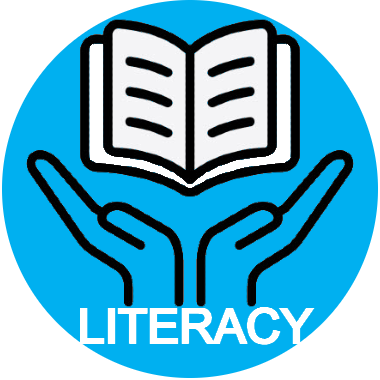 | (F) Foundations of Literacy
Learners will apply foundation reading and writing skills by working with sounds, letters, words, sentences, and texts.
|
Clusters- (PC) Print Concepts
Learners will demonstrate knowledge of books, print, and written language and how they function. - (PPA) Phonological and Phonemic Awareness
Learners will accurately manipulate phonemes (sounds) in the spoken language. - (PW) Phonics and Word
Study Learners will decode, encode, and connect meaning to word parts and words - (PWS) Phonics and Word Study
Learners will decode, encode, and connect meaning to word parts and words - (F) Fluency
Learners will read with sufficient accuracy, rate, and expression to support comprehension. - (FW) Foundations of Writing
Learners will write complete sentences and paragraphs.
Calculation Method for StrandsStrands are larger groups of related standards. The Strand Grade is a calculation of all the related standards. Click on the standard name below each Strands to access the learning targets and rubrics/ proficiency scales
for individual standards within the domain. |
|
ELA-01.F.03

|
1st Grade (ELA) Targeted Standard
(F) Foundations of Literacy
(PC) Print Concepts
Learners will demonstrate knowledge of books, print, and written language and how they function.
|
ELA-01.F.03 Identify the distinguishing features of a sentence.
 Proficiency Scale Proficiency Scale
Progressions
Standard F.01: Parts of Books (is mastered in kindergarten)
- ELA-00.F.03 Recognize that sentences have letters, words, spaces between words, capitalization, and ending punctuation.
- ELA-01.F.03 Identify the distinguishing features of a sentence.
|
|
ELA-01.F.05

|
1st Grade (ELA) Targeted Standard
(F) Foundations of Literacy
(PPA) Phonological and Phonemic Awareness
Learners will accurately manipulate phonemes (sounds) in the spoken language.
|
ELA-01.F.05 Segment one-syllable spoken words into four or more phonemes.*
 Proficiency Scale Proficiency Scale
Progressions
Standard F.05: Segmenting Words (is mastered in first grade)
- ELA-00.F.05 Segment parts of spoken words.*
- ELA-01.F.05 Segment one-syllable spoken words into four or more phonemes.*
|
|
ELA-01.F.06

|
1st Grade (ELA) Targeted Standard
(F) Foundations of Literacy
(PPA) Phonological and Phonemic Awareness
Learners will accurately manipulate phonemes (sounds) in the spoken language.
|
ELA-01.F.06 Blend four or more phonemes to produce a spoken word or syllable.*
 Proficiency Scale Proficiency Scale
Progressions
Standard F.06: Blending Syllables and Phonemes (is mastered in first grade)
- ELA-00.F.06 Blend parts of spoken words.*
- ELA-01.F.06 Blend four or more phonemes to produce a spoken word or syllable.*
|
|
ELA-01.F.07

|
1st Grade (ELA) Targeted Standard
(F) Foundations of Literacy
(PPA) Phonological and Phonemic Awareness
Learners will accurately manipulate phonemes (sounds) in the spoken language.
|
ELA-01.F.07 Manipulate parts of spoken words.*
 Proficiency Scale Proficiency Scale
Sub-Standards
- (a.) Delete initial and final phonemes or word parts.
- (b.) Substitute initial, medial vowel, final phonemes, or word parts.
Progressions
Standard F.07: Isolating and Manipulating Phonemes (is mastered in first grade)
- ELA-00.F.07 Isolate and pronounce the initial, medial vowel, and final phonemes in three-phoneme words.*
- ELA-01.F.07 Manipulate parts of spoken words.*
|
|
ELA-01.F.08

|
1st Grade (ELA) Targeted Standard
(F) Foundations of Literacy
(PWS) Phonics and Word Study
Learners will decode, encode, and connect meaning to word parts and words.
|
ELA-01.F.08 Decode words with phoneme-grapheme correspondences:*
 Proficiency Scale Proficiency Scale
Sub-Standards
- (a.) consonant digraphs
- (b.) two consonant blends at the beginning and end of words
- (c.) single consonant after a short vowel
- (d.) soft and hard c and g; s as /z/
- (e.) closed and open syllables
- (f.) silent e in single-syllable words
- (g.) vowel teams
- (h.) r-controlled
- (i.) prefixes and suffixes (two-syllable words) (e.g., redo, undo, doing)
- (j.) functions of y
- (k.) contractions
- (l.) irregularly spelled high-frequency words
Progressions
Standard F.08: Decoding Words
- ELA-00.F.08 Decode words with phoneme-grapheme correspondences:*
- ELA-01.F.08 Decode words with phoneme-grapheme correspondences:*
- ELA-02.F.08 Decode words with phoneme-grapheme correspondences:*
- ELA-03.F.08 Decode words with phoneme-grapheme correspondences:*
- ELA-04.F.08 Decode words using the combined knowledge of syllabication patterns and morphology in context and out of context:*
- ELA-05.F.08 Decode words using the combined knowledge of syllabication patterns and morphology in context and out of context:*
|
|
ELA-01.F.09

|
1st Grade (ELA) Targeted Standard
(F) Foundations of Literacy
(PWS) Phonics and Word Study
Learners will decode, encode, and connect meaning to word parts and words.
|
ELA-01.F.09 Encode words with phoneme-grapheme correspondences:*
 Proficiency Scale Proficiency Scale
Sub-Standards
- (a.) digraphs
- (b.) two consonant blends
- (c.) silent e
- (d.) double consonants at the end of words
- (e.) irregularly spelled high-frequency word
Progressions
Standard F.09: Encoding Words (Spelling)
- ELA-00.F.09 Encode words with phoneme-grapheme correspondences:*
- ELA-01.F.09 Encode words with phoneme-grapheme correspondences:*
- ELA-02.F.09 Encode words with phoneme-grapheme correspondences:*
- ELA-03.F.09 Encode words with phoneme-grapheme correspondences:*
- ELA-04.F.09 Encode words using the combined knowledge of syllabication patterns and morphology in context and out of context:*
- ELA-05.F.09 Encode words using the combined knowledge of syllabication patterns and morphology in context and out of context:*
|
|
ELA-01.F.10

|
1st Grade (ELA) Targeted Standard
(F) Foundations of Literacy
(PWS) Phonics and Word Study
Learners will decode, encode, and connect meaning to word parts and words.
|
ELA-01.F.10 Determine the meaning of multiple-meaning words with phonics patterns that have been taught.
 Proficiency Scale Proficiency Scale
Progressions
Standard F.10: Determining Meanings of Words (Vocabulary)
- ELA-00.F.10 Determine the meaning of multiple-meaning words with phonics patterns that have been taught.
- ELA-01.F.10 Determine the meaning of multiple-meaning words with phonics patterns that have been taught.
- ELA-02.F.10 Determine the meaning of multiple-meaning words with phonics patterns that have been taught.
- ELA-03.F.10 Determine the meaning of multiple-meaning words and phrases, choosing from a range of strategies with varying texts.
- ELA-04.F.10 Determine the meaning of unknown and multiple-meaning words and phrases, choosing from a range of strategies with varying texts.
- ELA-05.F.10 Determine the meaning of unknown and multiple-meaning words and phrases, choosing from a range of strategies with varying texts.
|
|
ELA-01.F.11

|
1st Grade (ELA) Targeted Standard
(F) Foundations of Literacy
(PWS) Phonics and Word Study
Learners will decode, encode, and connect meaning to word parts and words.
|
ELA-01.F.11 Use new academic, content-specific, grade-level vocabulary, make connections to previously learned words, and relate new words to background knowledge.
 Proficiency Scale Proficiency Scale
Sub-Standards
- (a.) Make connections to a word's structure using knowledge of phonology, morphology, and word
orthography to aid learning.
Progressions
Standard F.11: Academic Vocabulary
- ELA-00.F.11 Orally use new academic, content-specific, grade-level vocabulary and relate new words to prior knowledge.
- ELA-01.F.11 Use new academic, content-specific, grade-level vocabulary, make connections to previously learned words, and relate new words to background knowledge.
- ELA-02.F.11 Use new academic, content-specific, grade-level vocabulary, connecting previously learned words and relating new words to background knowledge.
- ELA-03.F.11 Use new academic, content-specific, grade-level vocabulary to make connections to previously learned words and relate new words to background knowledge.
- ELA-04.F.11 Accurately interpret general academic and domain-specific words and phrases.
- ELA-05.F.11 Acquire and use grade-level vocabulary, clarifying the meaning of unknown and multiple-meaning words and phrases in the text, choosing from a range of strategies.
|
|
ELA-01.F.12

|
1st Grade (ELA) Targeted Standard
(F) Foundations of Literacy
(F) Fluency
Learners will read with sufficient accuracy, rate, and expression to support comprehension.
|
ELA-01.F.12 Read accurately and automatically.*
 Proficiency Scale Proficiency Scale
Sub-Standards
- (a.) at the word level
- (b.) at the sentence level
- (c.) a variety of first-grade texts with expression, phrasing, purpose, and understanding.
Progressions
Standard F.12: Oral Reading Fluency
- ELA-00.F.12 Demonstrate fluency through the application of phonemic and phonological skills.*
- ELA-01.F.12 Read accurately and automatically.*
- ELA-02.F.12 Read accurately and automatically a variety of second-grade texts with expression, phrasing, purpose, and understanding.*
- ELA-03.F.12 Read accurately and automatically a variety of third-grade texts with expression, phrasing, purpose, and understanding.*
- ELA-04.F.12 Read accurately and automatically a variety of fourth-grade texts using expression, phrasing, purpose, and understanding.*
- ELA-05.F.12 Read accurately and automatically a variety of fifth-grade texts with expression, phrasing, purpose, and understanding.*
|
|
ELA-01.F.13

|
1st Grade (ELA) Targeted Standard
(F) Foundations of Literacy
(FW) Foundations of Writing
Learners will write complete sentences and paragraphs.
|
ELA-01.F.13 Write uppercase and lowercase letters accurately and automatically.*
 Proficiency Scale Proficiency Scale
Progressions
Standard F.13: Letter Formation (is mastered in second grade)
- ELA-00.F.13 Write uppercase and lowercase letters accurately.*
- ELA-01.F.13 Write uppercase and lowercase letters accurately and automatically.*
- ELA-02.F.13 Write uppercase and lowercase letters accurately and automatically for all writing purposes.
|
|
ELA-01.F.14

|
1st Grade (ELA) Targeted Standard
(F) Foundations of Literacy
(FW) Foundations of Writing
Learners will write complete sentences and paragraphs.
|
ELA-01.F.14 Write simple sentences using subject and predicate, with capital letters, punctuation, and appropriate word spacing.
 Proficiency Scale Proficiency Scale
Progressions
Standard F.14: Sentence and Paragraph Writing
- ELA-00.F.14 Write a simple sentence using subject and predicate, with capital letters, punctuation, and appropriate word spacing.
- ELA-01.F.14 Write simple sentences using subject and predicate, with capital letters, punctuation, and appropriate word spacing.
- ELA-02.F.14 Write a paragraph including multiple complete sentences on a topic. *
- ELA-03.F.14 Write an organized paragraph with a topic sentence, supporting sentences, and a conclusion.
- ELA-04.F.14 Write an organized paragraph that includes a topic sentence, multiple supporting sentences, and a concluding sentence.*
- ELA-05.F.14 Write multiple organized paragraphs that include a topic sentence, multiple supporting sentences, and a concluding sentence.*
|
|
ELA-01.IR  ELA-01.IR ELA-01.IR Strand  | (IR) Inquiry and Research
Learners will pose and revise complex questions, identify and connect pertinent information, plan and prepare an inquiry process, and arrive at a plausible conclusion or solution.
|
Clusters- (S1) Select a Research Topic and Develop Research Question(s)(begins in third grade)
- (S2) Locate and Select Information(begins in second grade)
- (S3) Organize Research Results(begins in second grade)
- (S4) Determining Credibility and Evaluating Sources(begins in third grade)
- (S5) Citing Sources(begins in fourth grade)
Calculation Method for StrandsStrands are larger groups of related standards. The Strand Grade is a calculation of all the related standards. Click on the standard name below each Strands to access the learning targets and rubrics/ proficiency scales
for individual standards within the domain. |
|
ELA-01.R  ELA-01.R ELA-01.R Strand 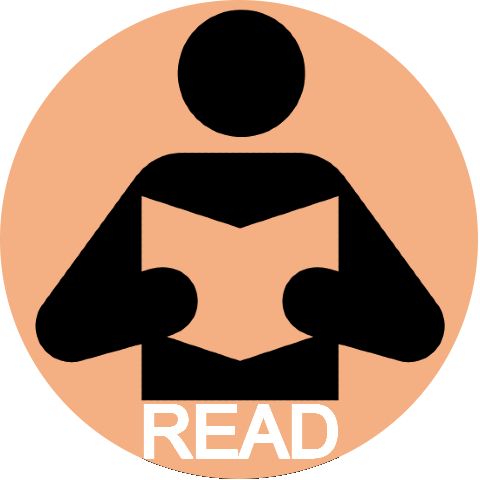 | (R) Reading
Learners will comprehend, analyze, and evaluate literary and informational texts in various formats, genres, and levels of complexity.
|
Clusters- (C) Comprehension
Learners will read to understand various complex literary and informational texts.
- (TA) Text Analysis
Learners will analyze, interpret, and evaluate complex literary and informational texts that include a wide variety of genres and formats.
Calculation Method for StrandsStrands are larger groups of related standards. The Strand Grade is a calculation of all the related standards. Click on the standard name below each Strands to access the learning targets and rubrics/ proficiency scales
for individual standards within the domain. |
|
ELA-01.R.02

|
1st Grade (ELA) Targeted Standard
(R) Reading
(C) Comprehension
Learners will read to understand a variety of complex literary and informational texts.
|
ELA-01.R.02 Ask and answer questions about a variety of texts, genres, photographs, or illustrations before, during, and after shared reading or other text-listening experiences to compare, contrast, predict, or infer.
 Proficiency Scale Proficiency Scale
Progressions
Standard R.02: Text Comprehension/Inferences
- ELA-00.R.02 Respond to a variety of texts, photographs, or illustrations before, during, and after shared reading or other text-listening experiences to compare, contrast, predict, or infer.
- ELA-01.R.02 Ask and answer questions about a variety of texts, genres, photographs, or illustrations before, during, and after shared reading or other text-listening experiences to compare, contrast, predict, or infer.
- ELA-02.R.02 Ask and answer questions about key details before, during, and after reading a variety of literary and informational texts to compare, contrast, predict, or
infer.*
- ELA-03.R.02 Ask and answer questions about key details before, during, and after reading a variety of genres, literary, and informational texts using text evidence to
compare, contrast, predict, and infer.*
- ELA-04.R.02 Make inferences while reading a variety of genres, literary, and informational texts; providing text evidence.*
- ELA-05.R.02 Make inferences drawn from the text during and after reading a variety of genres, literary, and informational texts.*
- ELA-06.R.02 Comprehend a variety of texts while developing inferences and providing supportive textual evidence.
- ELA-07.R.02 Comprehend a variety of texts while developing inferences and providing supportive textual evidence and reasoning.
- ELA-08.R.02 Comprehend a variety of texts while developing inferences and providing relevant textual evidence and reasoning.
- ELA-09.R.02 Comprehend a variety of texts with multiple levels of complexity while developing inferences and providing relevant textual evidence and reasoning.
- ELA-10.R.02 Comprehend a variety of texts with multiple levels of complexity while developing inferences and providing relevant textual evidence and reasoning.
- ELA-11.R.02 Comprehend a variety of texts with multiple levels of complexity while developing inferences and providing relevant textual evidence and reasoning.
- ELA-12.R.02 Comprehend a variety of texts with multiple levels of complexity while developing inferences and providing relevant textual evidence and reasoning.
|
|
ELA-01.R.03a

|
1st Grade (ELA) Targeted Standard
(R) Reading
(C) Comprehension
Learners will read to understand a variety of complex literary and informational texts.
|
ELA-01.R.03a Identify the topic of an informational text, photograph, or illustration during or after a shared reading or other text-listening experiences.*
 Proficiency Scale Proficiency Scale
Progressions
Standard R.03a: Summarizing Nonfiction Text
- ELA-00.R.03a Tell about the informational text, photographs, or illustrations before, during, or after a shared reading or other text-listening experience.*
- ELA-01.R.03a Identify the topic of an informational text, photograph, or illustration during or after a shared reading or other text-listening experiences.*
- ELA-02.R.03a Identify the main idea with supporting details during or after reading an informational text or passage.*
- ELA-03.R.03a Summarize the main idea(s) with supporting details during or after reading an informational text or passage.*
- ELA-04.R.03a Summarize an informational text or passage, stating the main idea(s) and providing supporting details.*
- ELA-05.R.03a Summarize an informational text or passage, stating the main idea(s) and providing supporting details.*
- ELA-06.R.03a Summarize nonfiction texts objectively, including relevant details.
- ELA-07.R.03a Summarize and/or paraphrase nonfiction texts objectively, including relevant details and avoiding unnecessary information.
- ELA-08.R.03a Summarize and/or paraphrase nonfiction texts objectively, including relevant details and avoiding unnecessary information.
- ELA-09.R.03a Summarize and/or paraphrase nonfiction texts objectively, including relevant information.
- ELA-10.R.03a Summarize and/or paraphrase nonfiction texts objectively, including relevant information.
- ELA-11.R.03a Summarize and/or paraphrase nonfiction texts objectively, including relevant information.
- ELA-12.R.03a Summarize and/or paraphrase nonfiction texts objectively, including relevant information.
|
|
ELA-01.R.03b

|
1st Grade (ELA) Targeted Standard
(R) Reading
(C) Comprehension
Learners will read to understand a variety of complex literary and informational texts.
|
ELA-01.R.03b Identify characters, setting, and plot in a literary text during or after a shared reading or other text-listening experience.*
 Proficiency Scale Proficiency Scale
Progressions
Standard R.03b: Summarize Literary Text
- ELA-00.R.03b Tell about characters and setting in a literary text during or after a shared reading or other text-listening experience.*
- ELA-01.R.03b Identify characters, setting, and plot in a literary text during or after a shared reading or other text-listening experience.*
- ELA-02.R.03b Retell the plot to include the beginning, middle, and end of a literary text after reading.*
- ELA-03.R.03b Summarize the story by including major story elements after reading a literary text or passage.*
- ELA-04.R.03b Summarize the story by including major story elements after reading a literary text or passage.*
- ELA-05.R.03b Summarize a story by including major story elements after reading a literary text.*
- ELA-06.R.03b Summarize literary texts objectively, including relevant details.
- ELA-07.R.03b Summarize and/or paraphrase literary texts objectively, including relevant details and avoiding unnecessary information.
- ELA-08.R.03b Summarize and/or paraphrase literary texts objectively, including relevant details and avoiding unnecessary information.
- ELA-09.R.03b Summarize and/or paraphrase literary texts objectively, including relevant information.
- ELA-10.R.03b Summarize and/or paraphrase literary texts objectively, including relevant information.
- ELA-11.R.03b Summarize and paraphrase literary texts objectively, including relevant information.
- ELA-12.R.03b Summarize and paraphrase literary texts objectively, including relevant information.
|
|
ELA-01.R.05

|
1st Grade (ELA) Targeted Standard
(R) Reading
(C) Comprehension
Learners will read to understand a variety of complex literary and informational texts.
|
ELA-01.R.05 Determine the meaning of unknown and multiple-meaning words and phrases through read-alouds or other text-listening experiences.*
 Proficiency Scale Proficiency Scale
Progressions
Standard R.05: Use Text to Determine Word Meaning
- ELA-00.R.05 Determine the meaning of unknown and multiple-meaning words and phrases through read-alouds or other text-listening experiences.*
- ELA-01.R.05 Determine the meaning of unknown and multiple-meaning words and phrases through read-alouds or other text-listening experiences.*
- ELA-02.R.05 Determine the meaning of unknown words and phrases through a variety of text experiences.*
- ELA-03.R.05 Determine the meaning of unknown and multi-meaning words within a text.*
- ELA-04.R.05 Determine the meaning of unknown and multiple-meaning words and phrases within a text.*
- ELA-05.R.05 Determine the meaning of unknown and multiple-meaning words and phrases within a text.*
- ELA-06.R.05 Determine the meaning of words and phrases as they are used in the text, including figurative, denotative, and connotative meanings.
- ELA-07.R.05 Determine the meaning and purpose of words and phrases as they contribute to the text, including figurative, denotative, and connotative meanings.
- ELA-08.R.05 Determine the meaning and purpose of words and phrases as they contribute to the text, including figurative, denotative, and connotative meanings.
- ELA-09.R.05 Determine the meaning and purpose of words and phrases as they are used in the text, including academic vocabulary, figurative, ambiguous, and connotative meanings.
- ELA-10.R.05 Determine the meaning and purpose of words and phrases as they are used in the text, including academic vocabulary, figurative, ambiguous, and connotative meanings.
- ELA-11.R.05 Determine the meaning, purpose, and impact of words and phrases as they are used in the text, including academic vocabulary, figurative, ambiguous, and connotative meanings.
- ELA-12.R.05 Determine the meaning, purpose, and impact of words and phrases as they are used in the text, including academic vocabulary, figurative, ambiguous, and connotative meanings.
|
|
ELA-01.R.06

|
1st Grade (ELA) Targeted Standard
(R) Reading
(TA) Text Analysis
Learners will analyze, interpret, and evaluate complex literary and informational texts that include a wide variety of genres and formats.
|
ELA-01.R.06 Recognize basic text features during or after a shared reading or other text-listening experience.
 Proficiency Scale Proficiency Scale
Progressions
Standard R.06: Text Features and Structure
- ELA-00.R.06 Identify photographs, illustrations, and labels during or after a shared reading or other text-listening experience.
- ELA-01.R.06 Recognize basic text features during or after a shared reading or other text-listening experience.
- ELA-02.R.06 Identify text features and use previously learned text features to read and understand a text or passage.*
- ELA-03.R.06 Use text features and previously learned text features to read and understand a text or passage.*
- ELA-04.R.06 Determine the structure of an informational text: ELA-05.R.06 Describe the structure of informational texts:
- ELA-06.R.06 Describe how a paragraph, chapter, stanza, or section fits into the overall structure of a text and contributes to the development of ideas.
- ELA-07.R.06 Analyze the structure an author uses to organize a text, including how the major sections or stanzas contribute to the whole and the development of ideas, and the overall purpose of the text.
- ELA-08.R.06 Analyze the structure an author uses to organize a text, including how sections, paragraphs, stanzas, and/or particular sentences contribute to the development of ideas and the overall purpose of the text.
- ELA-09.R.06 Analyze how the author's choice in structure, form, and format supports the purpose, contributes to the meaning, or impacts the audience.
- ELA-10.R.06 Analyze how the author's choice in structure, form, and format supports the purpose, contributes to the meaning, or impacts the audience.
- ELA-11.R.06 Analyze and evaluate how the author's choice in structure, form, and format supports the purpose, contributes to the meaning, or impacts the audience.
- ELA-12.R.06 Analyze and evaluate how the author's choice in structure, form, and format supports the purpose, contributes to the meaning, or impacts the audience.
|
|
ELA-01.R.08

|
1st Grade (ELA) Targeted Standard
(R) Reading
(TA) Text Analysis
Learners will analyze, interpret, and evaluate complex literary and informational texts that include a wide variety of genres and formats.
|
ELA-01.R.08 Use a variety of fiction texts.
 Proficiency Scale Proficiency Scale
Sub-Standards
- (a.) Identify characters’ feelings or traits in a story, poem, or nursery rhyme during or after a shared reading or other text-listening experience.
- (b.) Compare and contrast the adventures and experiences of characters in stories during or after a
shared reading or other text-listening experience.
Progressions
Standard R.08: Analysis and Comparison of Literary Texts
- ELA-00.R.08 Use a variety of fiction texts.
- ELA-01.R.08 Use a variety of fiction texts.
- ELA-02.R.08 Use a variety of fiction and poetry texts.
- ELA-03.R.08 Analyze a variety of fiction and poetry texts.
- ELA-04.R.08 Analyze a variety of fiction and poetry texts.
- ELA-05.R.08 Analyze a variety of fiction and poetry texts.
- ELA-06.R.08 Analyze a variety of fiction texts using textual evidence for support.
- ELA-07.R.08 Analyze a variety of fiction texts using textual evidence for support.
- ELA-08.R.08 Analyze a variety of fiction texts using textual evidence for support.
- ELA-09.R.08 Analyze the development and interaction of literary elements and determine how they impact meaning, using strong textual evidence to support the analysis.
- ELA-10.R.08 Analyze the development and interaction of literary elements and determine how they impact meaning, using strong textual evidence to support the analysis.
- ELA-11.R.08 Analyze the development and interaction of literary elements and determine how they impact meaning, using strong and thorough textual evidence to support the analysis.
- ELA-12.R.08 Analyze the development and interaction of literary elements and determine how they impact meaning, using strong and thorough textual evidence to support the analysis.
|
|
ELA-01.wL.01
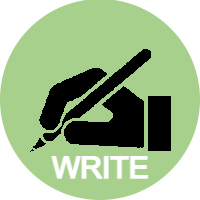
|
1st Grade (ELA) Targeted Standard
(Wr) Writing
(LU) Language Usage
Learners will integrate appropriate language and style to ensure effective readability in writing.
|
ELA-01.wL.01 Compose simple sentences.*
 Proficiency Scale Proficiency Scale
Sub-Standards
- (a.) Begin with a capital letter and capitalize proper names, months, and days of the week.
- (b.) Conclude with a period, question mark, or exclamation mark.
Progressions
Standard wL.01: Language Mechanics (K-5)/Language Mechanics and Grammar (6-12)
- ELA-00.wL.01 Compose a simple sentence.*
- ELA-01.wL.01 Compose simple sentences.*
- ELA-02.wL.01 Compose simple and compound sentences.*
- ELA-03.wL.01 Compose simple and compound declarative, interrogative, imperative, and exclamatory sentences.*
- ELA-04.wL.01 Compose simple and compound declarative, interrogative, imperative, and exclamatory sentences.*
- ELA-05.wL.01 Compose simple, compound, and complex sentences.*
- ELA-06.wL.01 Apply language knowledge for a specific task, purpose, intention, and audience, resolving issues of usage as needed.
- ELA-07.wL.01 Apply language knowledge for a specific task, purpose, intention, and audience, resolving issues of usage as needed.
- ELA-08.wL.01 Apply language knowledge for specific tasks, purposes, intentions, and audience, resolving usage issues as needed.
- ELA-09.wL.01 Apply language knowledge for a specific task, purpose, intention, and audience, resolving issues of usage as needed.
- ELA-10.wL.01 Apply language knowledge for a specific task, purpose, intention, and audience, resolving issues of usage as needed.
- ELA-11.wL.01 Apply language knowledge for a specific task, purpose, and audience, resolving issues of usage as needed.
- ELA-12.wL.01 Apply language knowledge for a specific task, purpose, and audience, resolving issues of usage as needed.
|
|
ELA-01.wL.02

|
1st Grade (ELA) Targeted Standard
(Wr) Writing
(LU) Language Usage
Learners will integrate appropriate language and style to ensure effective readability in writing.
|
ELA-01.wL.02 Recognize and use parts of speech in sentences:*
 Proficiency Scale Proficiency Scale
Sub-Standards
- (a.) nouns as concrete objects (i.e., people, places, and things)
- (b.) regular plural nouns
- (c.) present-tense verbs as actions
- (d.) color, size, and number adjectives
- (e.) the pronouns I, me, you, and we
- (f.) the conjunctions and, or, but
Progressions
Standard L.02: Grammar (K-5)
- ELA-00.wL.02 Identify parts of speech in sentences orally, with illustrations, or in writing:*
- ELA-01.wL.02 Recognize and use parts of speech in sentences:*
- ELA-02.wL.02 Recognize and use parts of speech in sentences:*
- ELA-03.wL.02 Recognize and use parts of speech in sentences:*
- ELA-04.wL.02 Recognize and use parts of speech in sentences:*
- ELA-05.wL.02 Recognize and use previous grade levels' parts of speech in simple, compound, and complex sentences.*
|
|
ELA-01.Wr  ELA-01.Wr ELA-01.Wr Strand  | (Wr) Writing
Learners will comprehend, analyze, and evaluate literary and informational texts in various formats, genres, and levels of complexity.
|
Clusters- (TTS) Text Types and Structure
Learners will engage in the writing process and produce a variety of texts determined to address different audiences and purposes.
- (WPC) Writing Process and Craft
Learners will develop, strengthen, and produce writing by planning, drafting, revising, editing, and rewriting.
- (LU) Language Usage
Learners will integrate appropriate language and style to ensure effective readability in writing.
Calculation Method for StrandsStrands are larger groups of related standards. The Strand Grade is a calculation of all the related standards. Click on the standard name below each Strands to access the learning targets and rubrics/ proficiency scales
for individual standards within the domain. |
|
ELA-01.Wr.01

|
1st Grade (ELA) Targeted Standard
(Wr) Writing
(TTS) Text Types and Structure
Learners will engage in the writing process and produce a variety of texts determined to address different audiences and purposes.
|
ELA-01.Wr.01 Produce writing through shared and interactive experiences in which the development and organization are appropriate to the task, purpose, or audience.*
 Proficiency Scale Proficiency Scale
Progressions
Standard Wr.01: Development and Purpose of Writing
- ELA-00.Wr.01 Produce writing through shared and interactive experiences in which the development and organization are appropriate to the task, purpose, or audience.*
- ELA-01.Wr.01 Produce writing through shared and interactive experiences in which the development and organization are appropriate to the task, purpose, or audience.*
- ELA-02.Wr.01 Produce writing appropriate to the task, purpose, or audience.*
- ELA-03.Wr.01 Produce writing that is organized appropriately to the task, purpose, or audience.*
- ELA-04.Wr.01 Produce clear writing in which the development and organization are appropriate to the task, purpose, or audience.*
- ELA-05.Wr.01 Produce clear writing in which the development and organization are appropriate to the task, purpose, or audience.*
- ELA-06.Wr.01 Produce clear writing organized according to the task, purpose, and audience.
- ELA-07.Wr.01 Produce clear and coherent writing organized according to the task, purpose, and audience.
- ELA-08.Wr.01 Produce clear and coherent writing organized logically according to the task, purpose, and audience.
- ELA-09.Wr.01 Write clearly and coherently with appropriate content, format, and style to accomplish a specific purpose for a target audience.
- ELA-10.Wr.01 Write clearly and coherently with appropriate content, format, and style to accomplish a specific purpose for a target audience.
- ELA-11.Wr.01 Write clearly and coherently with appropriate content, format, and style to accomplish a specific purpose for a target audience.
- ELA-12.Wr.01 Write clearly and coherently with appropriate content, format, and style to accomplish a specific purpose for a target audience.
|
|
ELA-01.Wr.03

|
1st Grade (ELA) Targeted Standard
(Wr) Writing
(TTS) Text Types and Structure
Learners will engage in the writing process and produce a variety of texts determined to address different audiences and purposes.
|
ELA-01.Wr.03 Write informative pieces that detail the topic.
 Proficiency Scale Proficiency Scale
Progressions
Standard Wr.03: Informative/Explanatory/Technical Writing Technique
- ELA-00.Wr.03 Draw and write informative pieces on a topic.
- ELA-01.Wr.03 Write informative pieces that detail the topic.
- ELA-02.Wr.03 Write informative pieces that include factual details on the topic.
- ELA-03.Wr.03 Write organized informative pieces that include factual details on the topic.
- ELA-04.Wr.03 Write organized informative pieces that include factual details on the topic.
- ELA-05.Wr.03 Write organized, informative pieces that include factual details on the topic.
- ELA-06.Wr.03 Write using informative/explanatory techniques to examine and convey complex ideas, concepts, and information utilizing different mediums when appropriate.
- ELA-07.Wr.03 Write using informative/explanatory techniques to examine and convey complex ideas, concepts, and information utilizing different mediums when appropriate.
- ELA-08.Wr.03 Write using informative/explanatory techniques to examine and convey complex ideas, concepts, and information utilizing different mediums when appropriate.
- ELA-09.Wr.03 Write to inform an audience and to explain complex information by creating a clear thesis and providing supporting claims, details, and evidence from a variety of relevant and reliable sources.
- ELA-10.Wr.03 Write to inform an audience and to explain complex information by creating a clear thesis and providing supporting claims, details, and evidence from a variety of relevant and reliable sources.
- ELA-11.Wr.03 Write to inform an audience and to explain complex information by creating a clear thesis and providing supporting claims, details, and evidence from a variety of relevant and reliable sources within discipline-specific structures utilizing different mediums to provide clarity and context.
- ELA-12.Wr.03 Write to inform an audience and to explain complex information by creating a clear thesis and providing supporting claims, details, and evidence from a variety of relevant and reliable sources within discipline-specific structures utilizing different mediums to provide clarity and context.
|
|
ELA-01.Wr.04

|
1st Grade (ELA) Targeted Standard
(Wr) Writing
(TTS) Text Types and Structure
Learners will engage in the writing process and produce a variety of texts determined to address different audiences and purposes.
|
ELA-01.Wr.04 Write opinion pieces on a topic using a reason to support the opinion.
 Proficiency Scale Proficiency Scale
Progressions
Standard Wr.04: Opinion/Argumentative/Persuasive Techniques
- ELA-00.Wr.04 Draw and write opinion pieces on a topic.
- ELA-01.Wr.04 Write opinion pieces on a topic using a reason to support the opinion.
- ELA-02.Wr.04 Write opinion pieces on a topic using reasons to support the opinion.
- ELA-03.Wr.04 Write organized opinion pieces on a topic using evidence to support the opinion.
- ELA-04.Wr.04 Write organized argumentative pieces on a topic using evidence to support the claim.
- ELA-05.Wr.04 Write organized argumentative pieces on a topic using evidence to support the claim.
- ELA-06.Wr.04 Write using argumentative techniques to develop claims using supporting evidence and logical reasoning.
- ELA-07.Wr.04 Write using argumentative techniques to develop claims using supportive evidence and logical reasoning, acknowledging counterclaims when applicable.
- ELA-08.Wr.04 Write using argumentative techniques to develop claims and counterclaims using supporting evidence and logical reasoning.
- ELA-09.Wr.04 Write to persuade an audience
- ELA-10.Wr.04 Write to persuade an audience
- ELA-11.Wr.04 Write to persuade an audience
- ELA-12.Wr.04 Write to persuade an audience
|
|
ELA-01.Wr.05

|
1st Grade (ELA) Targeted Standard
(Wr) Writing
(TTS) Text Types and Structure
Learners will engage in the writing process and produce a variety of texts determined to address different audiences and purposes.
|
ELA-01.Wr.05 Write narrative pieces that describe a single event with a beginning, middle, and end.
 Proficiency Scale Proficiency Scale
Progressions
Standard Wr.05: Narrative/Creative Writing Techniques
- ELA-00.Wr.05 Draw and write narrative pieces that describe a single event.
- ELA-01.Wr.05 Write narrative pieces that describe a single event with a beginning, middle, and end.
- ELA-02.Wr.05 Write narrative pieces that describe a well-elaborated event in sequence.
- ELA-03.Wr.05 Write narrative pieces that describe a well-elaborated real or imagined event in a sequence that unfolds naturally.
- ELA-04.Wr.05 Use narrative techniques (e.g., dialogue, description) to write pieces that describe a well-elaborated real or imagined event in a sequence that unfolds naturally.
- ELA-05.Wr.05 Use narrative techniques (e.g., dialogue, description, pacing) to write pieces that describe a well-elaborated real or imagined event in a sequence that unfolds naturally.
- ELA-06.Wr.05 Write using narrative techniques to develop real or imagined experiences or events using well-chosen details and structured event sequences.
- ELA-07.Wr.05 Write using narrative techniques to develop real or imagined experiences or events using well-chosen details and structured event sequences.
- ELA-08.Wr.05 Write using narrative techniques to develop real or imagined experiences or events using well-chosen details and structured event sequences.
- ELA-09.Wr.05 Write to convey real experiences, imaginary events, and poetic expressions by using creative writing techniques, such as narrative, dialogue, sensory details, figurative language, and symbolism, to engage an audience.
- ELA-10.Wr.05 Write to convey real experiences, imaginary events, and poetic expressions by using creative writing techniques, such as narrative, dialogue, sensory details, figurative language, and symbolism, to engage an audience.
- ELA-11.Wr.05 Write to convey real experiences, imaginary events, and poetic expressions by using creative writing techniques, such as narrative, dialogue, sensory details, figurative language, and symbolism, to engage an audience.
- ELA-12.Wr.05 Write to convey real experiences, imaginary events, and poetic expressions by using creative writing techniques, such as narrative, dialogue, sensory details, figurative language, and symbolism, to engage an audience.
|
|
ELA-01.Wr.06

|
1st Grade (ELA) Targeted Standard
(Wr) Writing
(WPC) Writing Process and Craft
Learners will develop, strengthen, and produce writing by planning, revising, editing, and rewriting.
|
ELA-01.Wr.06 Develop and strengthen writing utilizing the five steps appropriate to the task.
 Proficiency Scale Proficiency Scale
Sub-Standards
- (a.) Planning: Generate ideas and plan (e.g., teacher-structured oral rehearsal, graphic organizer, peer feedback).
- (b.) Drafting: Develop writing from the planning process.
- (c.) Revising: Improve writing by adding more details or deleting unnecessary wording or information.
- (d.) Editing: Improve writing by using appropriate grade-level spelling, sentence writing, and grammar standards.
- (e.) Presentation/Publishing: Produce a final draft that meets the task, purpose, or audience of the writing piece.
Progressions
Standard Wr.06: Writing Process
- ELA-00.Wr.06 Develop and strengthen writing utilizing the five steps appropriate to the task:
- ELA-01.Wr.06 Develop and strengthen writing utilizing the five steps appropriate to the task.
- ELA-02.Wr.06 Develop and strengthen writing utilizing the five steps appropriate to the task.
- ELA-03.Wr.06 Develop and strengthen writing utilizing the five steps appropriate to the task and purpose.
- ELA-04.Wr.06 Develop and strengthen writing utilizing the five steps appropriate to the task.
- ELA-05.Wr.06 Develop and strengthen writing utilizing the five steps appropriate to task, purpose, and audience.
- ELA-06.Wr.06 Develop and strengthen writing by planning, drafting, revising, and editing to provide clarity to the audience.
- ELA-07.Wr.06 Develop and strengthen writing by planning, drafting, revising, and editing to address specific purposes for the genre and audience.
- ELA-08.Wr.06 Develop and strengthen writing by planning, drafting, revising, and editing to address specific purposes for the genre and audience.
- ELA-09.Wr.06 Develop and strengthen writing through the writing process to produce a quality product for a specific purpose and audience.
- ELA-10.Wr.06 Develop and strengthen writing through the writing process to produce a quality product for a specific purpose and audience.
- ELA-11.Wr.06 Develop and strengthen writing through the writing process to produce a quality product for a specific purpose and audience.
- ELA-12.Wr.06 Develop and strengthen writing through the writing process to produce a quality product for a specific purpose and audience.
|
|
ELA-01.Wr.07

|
1st Grade (ELA) Targeted Standard
(Wr) Writing
(WPC) Writing Process and Craft
Learners will develop, strengthen, and produce writing by planning, revising, editing, and rewriting.
|
ELA-01.Wr.07 Produce writing with emotion or personality expressed through word choice.
 Proficiency Scale Proficiency Scale
Progressions
Standard Wr.07: Word Choice/Voice
- ELA-00.Wr.07 Produce shared and interactive writing with emotion or personality expressed through word choice.
- ELA-01.Wr.07 Produce writing with emotion or personality expressed through word choice.
- ELA-02.Wr.07 Write with intentional word choice that integrates emotion or descriptive language.
- ELA-03.Wr.07 Write with intentional word choice that integrates emotion and descriptive language to develop visual imagery for the reader.
- ELA-04.Wr.07 Write with intentional word choice that integrates emotion or figurative language to develop visual imagery for the reader.
- ELA-05.Wr.07 Write with intentional word choice that integrates emotion or figurative language to create a mood for the reader.
- ELA-06.Wr.07 Produce writing that uses intentional word choice and voice to match the writing purpose.
- ELA-07.Wr.07 Produce writing that uses intentional word choice and voice to match the writing purpose.
- ELA-08.Wr.07 Produce writing that uses intentional word choice and voice to match the writing purpose.
- ELA-09.Wr.07 Integrate vocabulary and figurative language to create a particular style and/or voice which supports the purpose of writing.
- ELA-10.Wr.07 Integrate vocabulary and figurative language to create a particular style and/or voice which supports the purpose of writing.
- ELA-11.Wr.07 Integrate vocabulary and figurative language to create a particular style and/or voice which supports the purpose of writing.
- ELA-12.Wr.07 Integrate vocabulary and figurative language to create a particular style and/or voice which supports the purpose of writing.
|
|

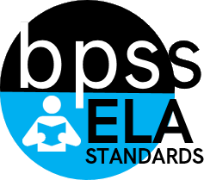
 (F)
(F)
 (C)
(C)
 (R)
(R)
 (Wr)
(Wr)
 (IR)
(IR)




